 South Australian Numbered Regulations
South Australian Numbered Regulations South Australian Numbered Regulations
South Australian Numbered Regulations(1) In these rules, unless the contrary intention appears—
"adopted standard" means a standard, except a national standard, that is adopted, applied or incorporated by the Light Vehicle Standards;
Example—
Rule 51(2)(c) applies Australian Standard AS 1973-1976 Retreaded Pneumatic Passenger Car and Light Truck Tyre .
"ADR" means a national standard known as an Australian Design Rule;
"air brake" means an air-operated or air-assisted brake;
"Air Services Act" means the Air Services Act 1995 of the Commonwealth;
"Airservices Australia" means the body established under section 7 of the Air Services Act;
"Airservices Australia vehicle" means a vehicle driven by any of the following persons in the course of the person’s duty to Airservices Australia:
(a) the Chief Executive Officer of Airservices Australia appointed under section 34 of the Air Services Act;
(b) a person appointed to act as Chief Executive Officer of Airservices Australia under section 41 of the Air Services Act;
(c) a person employed under section 42 of the Air Services Act;
(d) a person engaged as a consultant under section 43 of the Air Services Act ;
"air storage tank", of a vehicle, means a tank fitted to the vehicle for storing compressed air;
"ATM" (aggregate trailer mass), of a trailer, means the total maximum mass of the trailer, as stated by the manufacturer, together with the trailer’s load and the mass imposed on the towing vehicle by the trailer when the towing vehicle and trailer are on a horizontal surface;
"Australian Border Force vehicle" means a vehicle driven by a member of the Australian Border Force, being—
(a) a person—
(i) who is covered by paragraph (a) of the definition of "Immigration and Border Protection worker in section 4 of the Australian Border Force Act 2015 of the Commonwealth; and
(ii) who is in the Australian Border Force (as defined in that Act); or
(b) a person—
(i) who is covered by paragraph (b), (c) or (d) of the definition of "Immigration and Border Protection worker" in section 4 of the Australian Border Force Act 2015 of the Commonwealth; and
(ii) —
(A) whose services have been made available to the Australian Border Force; or
(B) who is performing services for the Australian Border Force;
"Australian Standard (AS)" or "Australian/New Zealand Standard (AS/NZS) means a standard approved for publication by Standards Australia;
Note—
Copies of Australian Standards or Australian/New Zealand Standards are available for purchase from Standards Australia at www.standards.org.au
"axle" means 1 or more shafts, positioned in a line across a vehicle, on which 1 or more wheels intended to support the vehicle turn;
"axle group" means a single, tandem or tri-axle group;
"braking system", of a vehicle, means all the brakes of the vehicle and all the components of the mechanisms by which they are operated;
"British Standard" means a standard approved for publication on behalf of the British Standards Institution;
Note—
Copies of British Standards are available for purchase from Standards Australia at www.standards.org.au
"British Standards Institution" means the institution of that name established under royal charter in the United Kingdom;
"bus" means a motor vehicle built mainly to carry people that seats over 9 adults (including the driver);
"car" means a motor vehicle built mainly to carry people that—
(a) seats not over 9 adults (including the driver); and
(b) has a body commonly known as a sedan, station wagon, coupe, convertible, or roadster; and
(c) has 4 or more wheels;
"centre line", of an axle, means—
(a) for an axle consisting of 1 shaft—a line parallel to the length of the axle and passing through the centre of the axle; or
(b) for an axle consisting of 2 shafts—a line in the vertical plane passing through—
(i) the centre of both shafts; and
(ii) the centres of the wheels on the shafts;
"centre line", of an axle group, means—
(a) if the group consists of 2 axles, 1 of which is fitted with twice the number of tyres as the other axle—a vertical line located one-third of the way from the centre line of the axle with more tyres towards the centre line of the axle with fewer tyres; and
(b) in any other case—a line located midway between the centre lines of the outermost axles of the group;
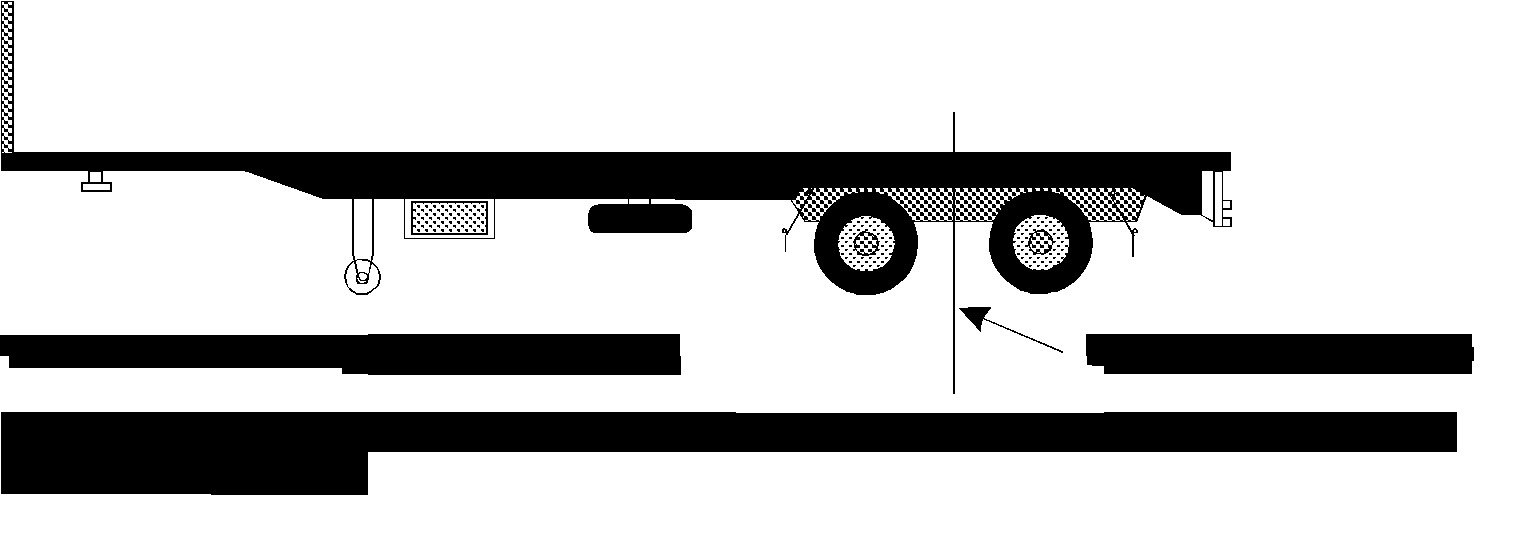
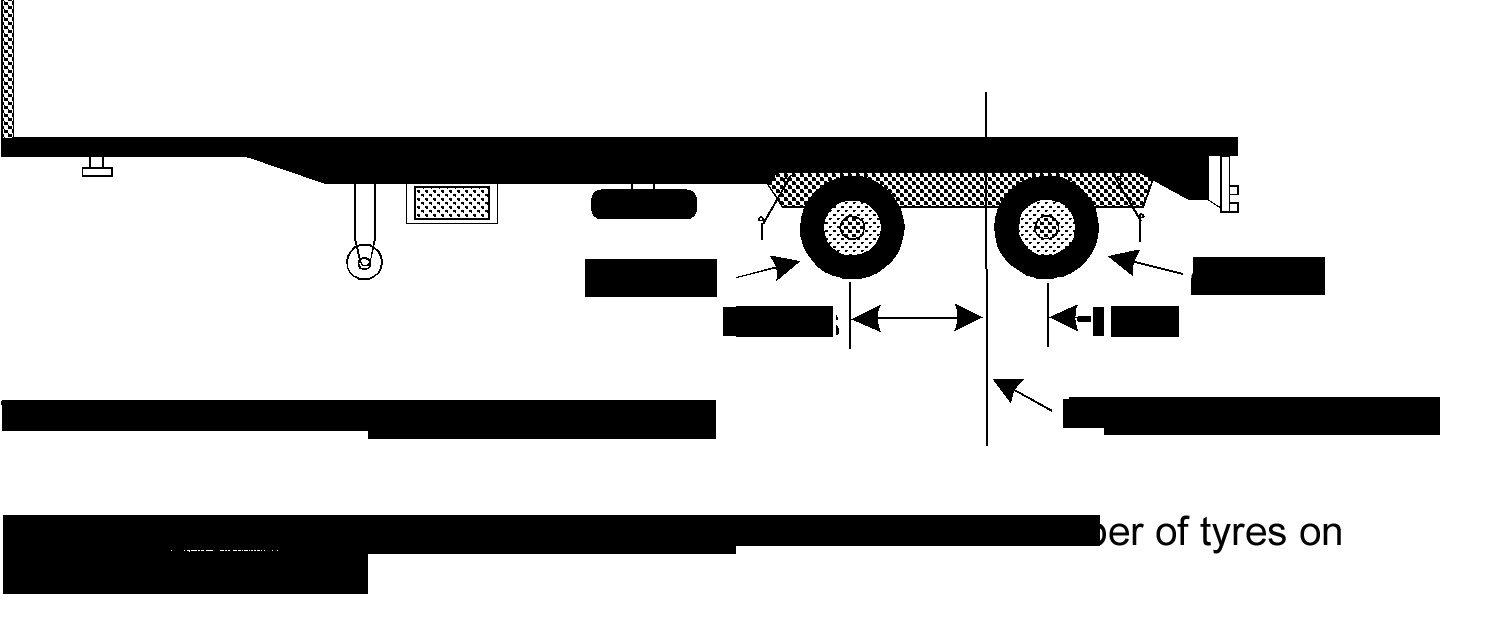
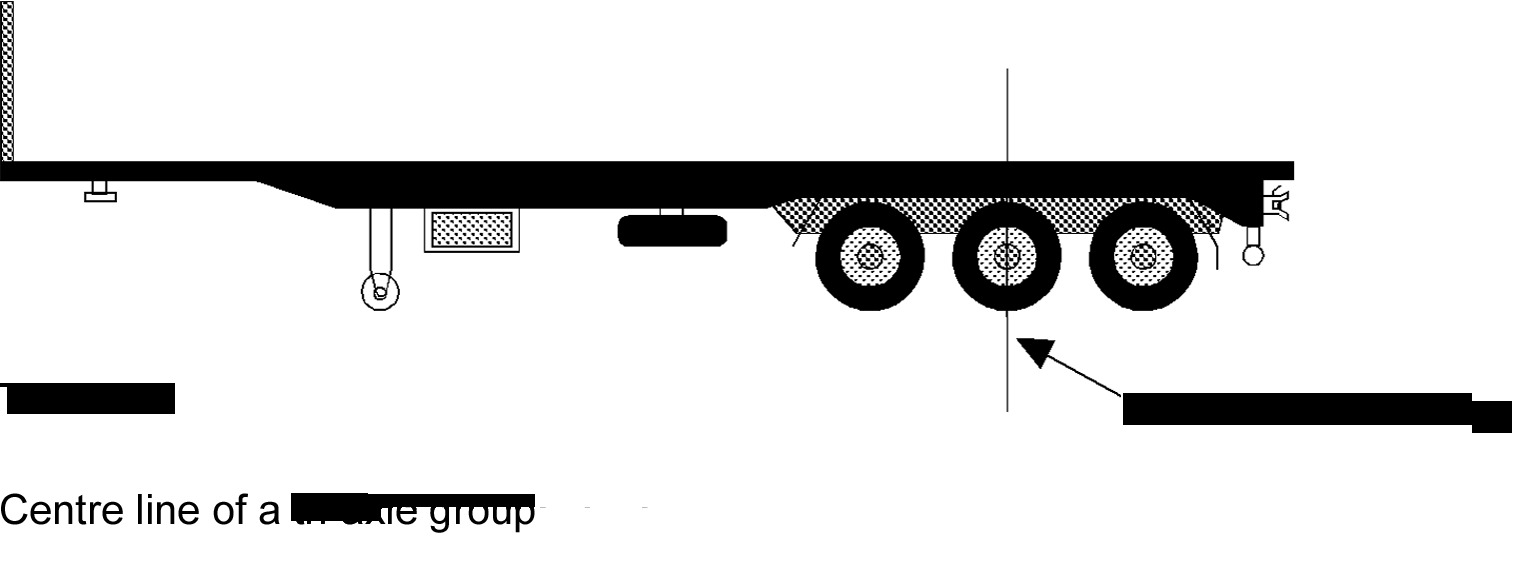
"combination" means a group of vehicles consisting of a motor vehicle connected to 1 or more vehicles;
"converter dolly" means a trailer with 1 axle group or single axle, and a fifth wheel coupling, designed to convert a semi-trailer into a dog trailer;
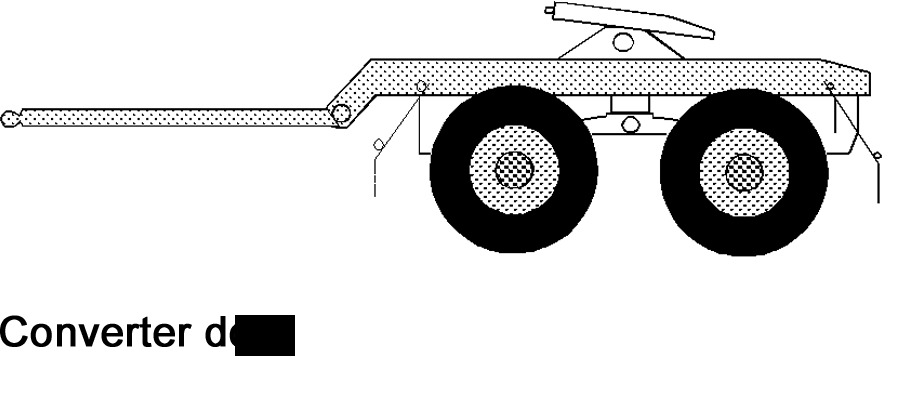
"daylight" means the period in a day from sunrise to sunset;
"diesel engine" means an engine that works on the compression-ignition principle, commonly known as a diesel engine;
"dog trailer" means a trailer (including a trailer consisting of a semi-trailer and converter dolly) with—
(a) 1 axle group or single axle at the front that is steered by connection to the towing vehicle by a drawbar; and
(b) 1 axle group or single axle at the rear;
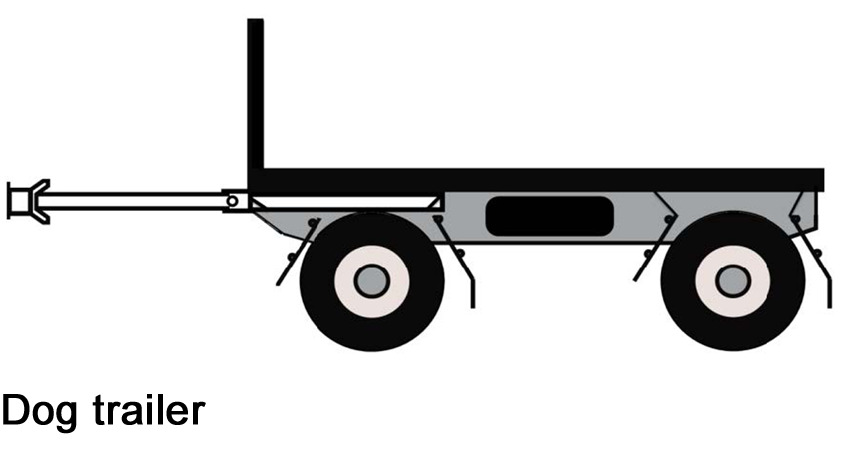
"drawbar" means a part of a trailer (except a semi-trailer) connecting the trailer body to a coupling for towing purposes;
"drive" includes be in control of;
"driver", of a vehicle, means the person driving the vehicle;
"emergency brake" means a brake designed to be used if a service brake fails;
"emergency vehicle" means a vehicle driven by any of the following in the course of the person's duty:
(a) a member of an emergency services organisation within the meaning of the Fire and Emergency Services Act 2005 ;
(b) an authorised officer under the Emergency Management Act 2004 ;
(c) a person engaged in the provision of emergency ambulance services under section 57(1) of the Health Care Act 2008 on behalf of—
(i) SA Ambulance Service Inc; or
(ii) St Johns Ambulance Australia South Australia Incorporated;
(d) any other person engaged in the provision of emergency ambulance services under section 57(1) of the Health Care Act 2008 ;
(e) a member of the armed forces of the Commonwealth engaged in police, fire fighting or ambulance duties or duties in connection with the urgent disposal of explosives or any emergency;
"exempt vehicle" means—
(a) an Airservices Australia vehicle; or
(b) an Australian Border Force vehicle; or
(c) an emergency vehicle; or
(d) a police vehicle;
"fifth wheel coupling" means a device, except the upper rotating element and the kingpin (which are parts of a semi-trailer), used with a prime mover, semi-trailer, or converter dolly, to allow quick coupling and uncoupling and to provide for articulation;
"front fog light" means a light used to improve the illumination of the road in case of fog, snowfall, heavy rain or a dust storm;
"GTM" (gross trailer mass) means the mass transmitted to the ground by the axles of a trailer when the trailer is loaded to its GVM and connected to a towing vehicle;
"GVM" (gross vehicle mass), of a vehicle, means the maximum loaded mass of the vehicle—
(a) as specified by the vehicle's manufacturer; or
(b) as specified by an Australian Authority if—
(i) the manufacturer has not specified a maximum loaded mass; or
(ii) the manufacturer cannot be identified; or
(iii) the vehicle has been modified to the extent that the manufacturer's specification is no longer appropriate;
"high-beam" for a headlight or front fog light fitted to a vehicle, means that the light is built or adjusted so, when the vehicle is standing on level ground, the top of the main beam of light projected is above the low-beam position;
"left", for a vehicle, means to the left of the centre of the vehicle when viewed by a person in the vehicle who is facing to the front of the vehicle;
"light vehicle" means a vehicle—
(a) if the vehicle is a trailer—with an ATM of 4.5 tonnes or less; or
(b) otherwise—with a GVM of 4.5 tonnes or less;
"low-beam" for a headlight or front fog light fitted to a vehicle, means that the light is built or adjusted so, when the vehicle is standing on level ground, the top of the main beam of light projected is—
(a) not higher than the centre of the headlight or fog light, when measured 8 metres in front of the vehicle; and
(b) not over 1 metre higher than the level where the motor vehicle is standing, when measured 25 metres in front of the vehicle;
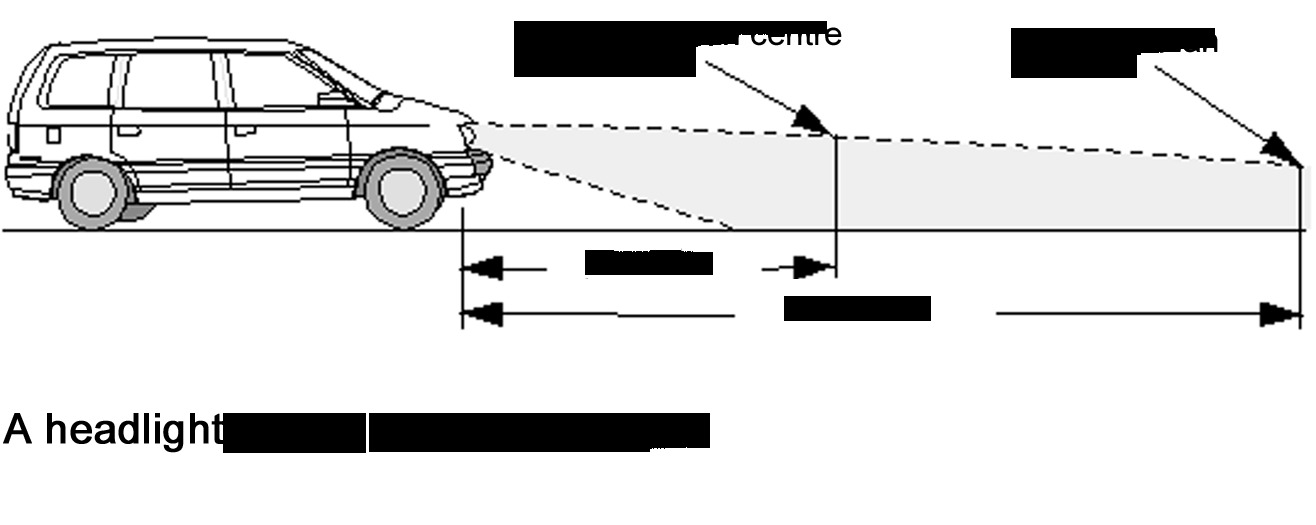
"moped" means a motor bike or motor trike with an engine cylinder capacity of not over 50 millilitres and a maximum speed of not over 50 kilometres an hour;
"motor bike" means a motor vehicle with 2 wheels, and includes a 2-wheeled motor vehicle with a sidecar attached to it that is supported by a third wheel;
"motor trike" means a motor vehicle with 3 wheels, but does not include a 2-wheeled motor vehicle with a sidecar attached to it that is supported by a third wheel;
"motor vehicle" means a vehicle built to be propelled by a motor that forms part of the vehicle;
"Motor Vehicle Standards Act" means the Motor Vehicle Standards Act 1989 of the Commonwealth;
"mudguard" means a fitting or device, with or without a mudflap, that is built and fitted to a vehicle in a way that will, as far as practicable, catch or deflect downwards any mud, stone, water, or other substance, thrown up by the rotation of the wheel of the vehicle for which the fitting or device is fitted;
"national standard" means a national standard under the Motor Vehicle Standards Act ;
Note—
See also subrule (5).
"nearer side of the vehicle", in relation to a light or reflector fitted to a vehicle, means the side of the vehicle that is closest to where the light or reflector is fitted;
"parking brake" of a vehicle, means the brake usually used to keep the vehicle stationary while the vehicle is parked;
"point of articulation" means—
(a) the axis of a kingpin for a fifth wheel; or
(b) the vertical axis of rotation of a fifth wheel coupling; or
(c) the vertical axis of rotation of a turntable assembly; or
(d) the vertical axis of rotation of the front axle group, or single axle, of a dog trailer; or
(e) the coupling pivot point of a semi-trailer;
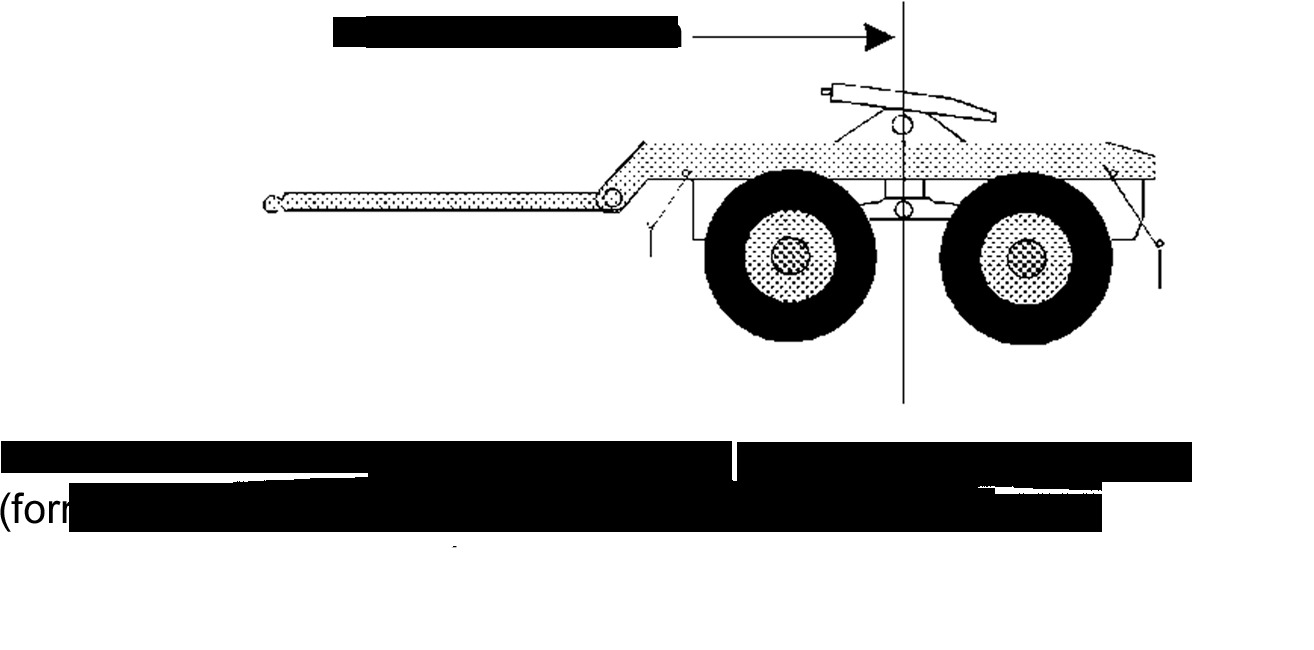
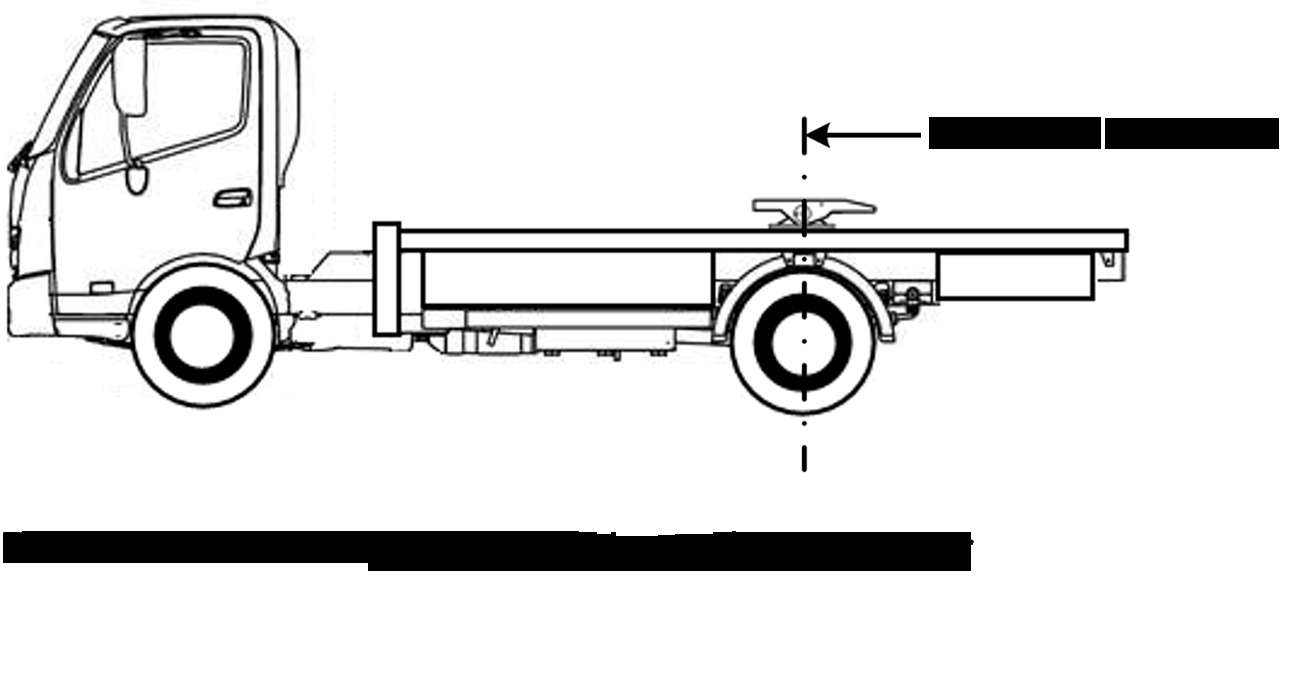
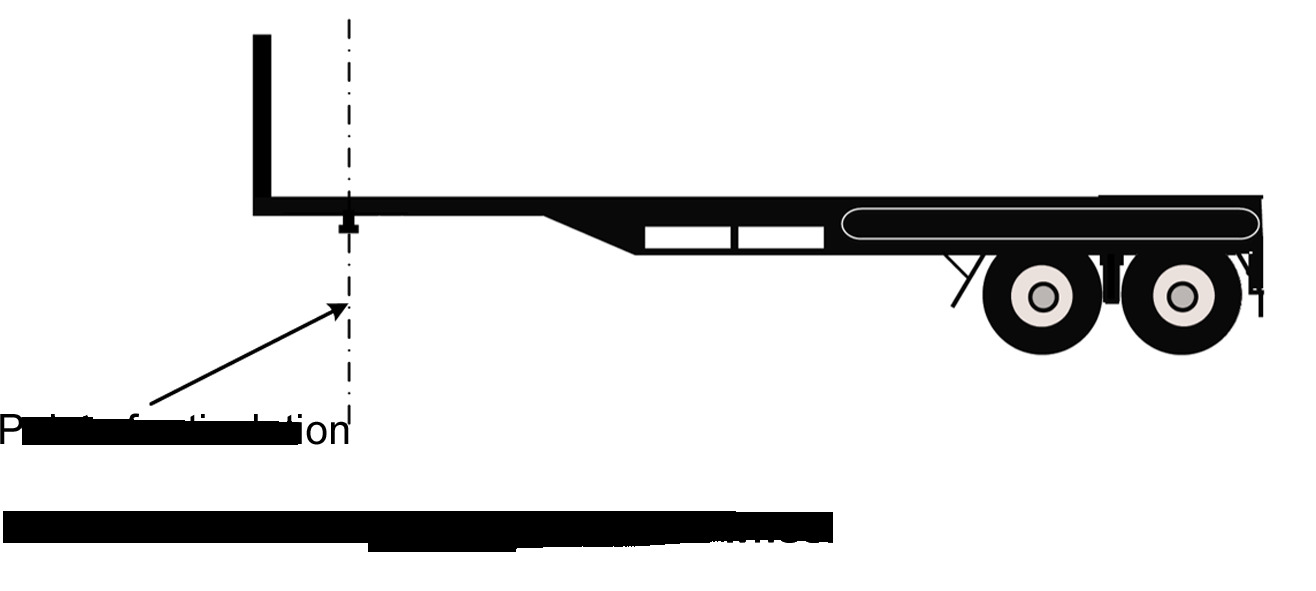
"pole-type trailer" means a trailer that—
(a) is attached to a towing vehicle by a pole, or an attachment fitted to the pole; and
(b) is ordinarily used for transporting loads, such as logs, pipes, structural members, or other long objects, that can generally support themselves like beams between supports;

"police officer" means a member of South Australia Police, a member of the Australian Federal Police or a service police officer within the meaning of the Defence Force Discipline Act 1982 of the Commonwealth;
"police vehicle" means a vehicle driven by a police officer in the course of the police officer's duty;
"prime mover" means a motor vehicle built to tow a semi-trailer;
"rear overhang", for the purposes of Part 6 Division 2—see rule 60;
"rear overhang line", for the purposes of Part 6 Division 2—see rule 60;
"right" for a vehicle, means to the right of the centre of the vehicle when viewed by a person in the vehicle who is facing to the front of the vehicle;
"road"—see rule 7;
"road-related area"—see rule 8;
"second edition ADR" means a national standard incorporated in the document described as the Australian Design Rules for Motor Vehicle Safety, Second Edition published by the Commonwealth Government;
"semi-trailer" means a trailer (including a pole-type trailer) that has—
(a) 1 axle group or single axle to the rear; and
(b) a means of attachment to a prime mover that results in some of the load being imposed on the prime mover;
"service brake" for a vehicle, means the brake normally used to decelerate the vehicle;
"side marker light" means a light fitted to the side of a vehicle indicating the presence and length of the vehicle when viewed on that side;
"single axle" means an axle not forming part of an axle group;
"single axle group" means a group of at least 2 axles in which the horizontal distance between the centre lines of the outermost axles is less than 1 metre;
"Standards Australia" means Standards Australia Limited ACN 087 326 690, or any body to which Standards Australia Limited is a successor in law or that is a successor in law to Standards Australia Limited;
"State Government enforcement vehicle" means a vehicle driven by any of the following in the course of the person's duty:
(a) an authorised officer under the Agricultural and Veterinary Products (Control of Use) Act 2002 ;
(b) an authorised officer under the Dangerous Substances Act 1979 ;
(c) a fisheries officer under the Fisheries Management Act 2007 ;
(d) an inspector under the Livestock Act 1997 ;
(e) an inspector under the Plant Health Act 2009 ;
(f) an authorised person under the Primary Produce (Food Safety Schemes) Act 2004 ;
(g) an authorised officer under the Road Traffic Act 1961 ;
"street rod vehicle" means—
(a) a vehicle that has been modified for safe road use; and
(b) either—
(i) has a body and frame that were built before 1949; or
(ii) is a replica of a vehicle, the body and frame of which were built before 1949;
"tandem axle group" means a group of at least 2 axles in which the horizontal distance between the centre lines of the outermost axles is at least 1 metre, but not over 2 metres;
"third edition ADR" means a national standard incorporated in the document described as the Australian Design Rules for Motor Vehicles and Trailers, Third Edition published by the Commonwealth Government;
"towing vehicle" for a trailer, means the vehicle towing the trailer;
"trailer" means a vehicle that is built to be towed, or is towed, by a motor vehicle, but does not include a motor vehicle that is being towed;
"tri-axle group" means a group of at least 3 axles in which the horizontal distance between the centre lines of the outermost axles is over 2 metres, but not over 3.2 metres;
"turntable" means a bearing built to carry vertical and horizontal loads, but that does not allow quick separation of its upper and lower rotating elements, and that is used to connect and allow articulation between—
(a) a prime mover and semi-trailer; or
(b) the steering axle or axle group of a dog trailer and the body of the trailer; or
(c) a fifth wheel coupling and the vehicle to which it is mounted;
"vacuum brakes" means vacuum-operated or vacuum-assisted brakes;
"vacuum storage tank" of a vehicle, means a tank fitted to the vehicle for storing air at low pressure;
"vehicle"—see rule 4;
"warning light" means a light fitted to a vehicle designed specifically to warn road users of the vehicle’s presence on a road;
"yellow" includes amber.
(2) The definitions in subrule (1) define certain words and expressions, and include signpost definitions to words and expressions defined elsewhere in the Light Vehicle Standards.
Note—
A signpost definition (e.g. "road-related area"—see rule 8) is included in subrule (1) if the definition applies outside the rule defining the word or expression.
(3) The definitions in subrule (1) are part of the Light Vehicle Standards.
(4) A definition in the Light Vehicle Standards applies to each use of the word or expression in the Light Vehicle Standards, unless the contrary intention appears.
(5) For the purposes of the definition of "national standard" in subrule (1), a reference in the Light Vehicle Standards to a national standard is a reference to the national standard as in force from time to time.